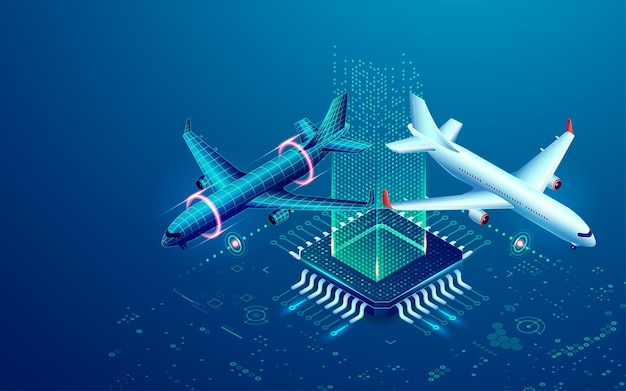In the rapidly evolving world of aviation, the concept of multi-sensor avionics integration is gaining significant traction. This advanced technology is pivotal for modern aircraft, enhancing both safety and efficiency. By seamlessly integrating data from various sensors, aircraft systems can provide pilots with comprehensive insights, aiding in more informed decision-making. In this article, we’ll delve into the intricacies of this technology and explore its impact on the aviation industry.

Introduction to Multi-Sensor Avionics Integration
The aviation sector is witnessing a paradigm shift with the advent of multi-sensor avionics integration. This technology amalgamates data from multiple sensors and systems within an aircraft, facilitating a holistic view of its operations. The primary aim is to enhance situational awareness and improve overall flight safety.
Importance of Avionics in Modern Aviation
Avionics systems are the backbone of modern aircraft, responsible for communication, navigation, and monitoring processes. Integrating multiple sensors into these systems ensures real-time data analysis, providing pilots with critical information at their fingertips. As aviation technology advances, the need for efficient and reliable avionics systems becomes increasingly important.
Components of Multi-Sensor Avionics Systems
Understanding the components involved in multi-sensor avionics integration is essential for grasping its full potential. These systems typically include:
- Radar Sensors: Used for detecting objects and determining their range, angle, or velocity.
- GPS Systems: Provide precise positioning information essential for navigation.
- Inertial Measurement Units (IMUs): Measure the aircraft’s velocity, orientation, and gravitational forces.
- Optical Sensors: Capture visual data, supporting navigation and surveillance tasks.
Integration Techniques and Technologies
The integration of these diverse sensors requires sophisticated techniques and technologies. Advanced algorithms process the data, ensuring accurate and timely information dissemination. Some of the leading technologies in this domain include data fusion, machine learning, and artificial intelligence.
Benefits of Multi-Sensor Avionics Integration
The benefits of multi-sensor avionics integration extend beyond enhanced safety and efficiency. This technology also contributes to:
- Improved Situational Awareness: Comprehensive data integration enables pilots to better understand their environment, reducing the likelihood of errors.
- Enhanced Decision-Making: Access to real-time data supports informed decision-making, crucial in critical flight situations.
- Reduced Workload: Automation of certain tasks decreases pilot workload, allowing them to focus on more critical functions.
- Cost Efficiency: Streamlined operations and reduced fuel consumption lead to significant cost savings.
Challenges in Implementing Multi-Sensor Avionics Integration
Despite its advantages, the implementation of multi-sensor avionics integration is not without challenges. Some of these include:
- Complexity of Systems: Integrating multiple sensors into a coherent system requires sophisticated technology and expertise.
- Data Overload: The vast amount of data generated can overwhelm systems if not managed effectively.
- Cybersecurity Concerns: Ensuring the security of integrated systems is paramount to prevent potential cyber threats.
Addressing the Challenges
To overcome these challenges, the aviation industry is focusing on developing robust frameworks and advanced technologies. Collaborative efforts among industry leaders are also crucial in addressing these issues effectively.
Future of Multi-Sensor Avionics Integration
The future of multi-sensor avionics integration looks promising, with continuous advancements in technology. The integration of emerging technologies such as quantum computing and 5G networks holds the potential to revolutionize this domain further.
Impact on Autonomous Navigation
The development of autonomous navigation systems heavily relies on multi-sensor avionics integration. By providing comprehensive data inputs, these systems can function more efficiently, paving the way for fully autonomous aircraft in the future. More about this can be found in the discussion on autonomous navigation systems.
Conclusion
In conclusion, multi-sensor avionics integration is a transformative technology that is reshaping the aviation industry. As we navigate the future, its role will become increasingly critical in ensuring safe, efficient, and cost-effective air travel. The collaboration between technology developers, aviation professionals, and regulatory bodies will be key in harnessing its full potential.

FAQ
What is multi-sensor avionics integration?
Multi-sensor avionics integration refers to the process of combining data from various sensors in an aircraft to provide a comprehensive view of its operations. This integration enhances situational awareness and improves flight safety.
Why is multi-sensor avionics integration important?
This technology is crucial for modern aviation as it enhances decision-making, reduces pilot workload, and improves overall operational efficiency. It is key to ensuring safe and efficient air travel.
What challenges are associated with multi-sensor avionics integration?
Some of the challenges include system complexity, data overload, and cybersecurity concerns. Addressing these challenges requires advanced technologies and collaborative efforts within the industry.
For more information on aerospace electronics and related technologies, visit BAE Systems or explore fault tolerance in aerospace electronics.


